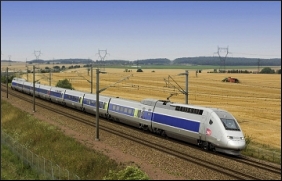|

|
Bullet Train can create biz opportunities worth $51 bn for MSMEs
|
|

|
|
| Top Stories |
 |
|
|
|
Saurabh Gupta | 25 Dec, 2015
Prime Minister, Narendra Modi's ambitious Bullet Train project can create a business opportunity of USD 51 billion for the micro, small and medium enterprises (MSMEs) in India, said a domestic rating agency SMERA.
The proposed Rs 98000-crore Mumbai-Ahmedabad bullet project can potentially add 1.5 percent to MSME debt shortfall over the next 10 years, said a domestic rating agency SMERA.
"The project not only has the potential to showcase technological progress of the country but also could change the MSME landscape of India in terms of technology absorption and innovation. However, there will be an additional debt requirement of USD 19 bn over and above the current debt shortfall faced by MSMEs in India," agency said in a release on Thursday in New Delhi.
According to SMERA's report, if Government of India's plan for a Bullet train network (Diamond Quadrilateral) is executed, an estimated USD 168 bn will be spent over the next 10 years. These calculations incorporate the Mumbai- Ahmedabad High Speed Corridor.
During the course of the project, a 30 percent offset clause in favour of MSMEs, can unleash nearly USD 51 bn for the sector.
Collectively 28 percent of India's MSMEs operating in sectors such as special purpose machinery, fabricated metal products and printing among others will be directly or indirectly influenced by this mega program, it said.
With the additional money stock circulating in the system due to cheap bilateral credit from partner countries such as Japan and China, access to debt should ideally be easy for the MSME sector - provided there is innovative financing facilities.
"The Bullet Train project will have far reaching effects in terms of technology diffusion across the value chain, helping India make an immense leap. The Central Government's initiative will have a ripple effect on the MSME sector, strengthening India's capabilities in line of the Make in India plan," said Sankar Chakraborti, CEO, SMERA Ratings Limited.
As per SMERA analysis, if India were to take ten years to lay down 6000 km of high speed rail network, the per Kilometre cost will be USD 28 mn. This figure consists of the costs pertaining to both the rolling stock and construction activity. Involvement of manufacturing based MSMEs in the project will create immense value for the sector in terms of aiding the Gross Capital Formation (GCF). SMERA estimates that currently, the GCF for the MSME segment is USD 52 bn, which is an important indicator of the extra value created over existing fixed assets. Equivalent of 3.7 percent of the annual manufacturing MSME GCF can be attributed to the cheap additional debt made available through the project. This will create value in terms of innovation and capacity utilization in the sector - depending on how efficiently credit is deployed.
In terms of the viability and timing of the bullet train project, SMERA estimates that at USD 1600 per capita income, India is as a matter of fact in a better position than Japan - when it got its first Series 0 Shinkansen in 1964.
As per SMERA analysis, Japanese inflation adjusted per capita income (in present day money terms) was only USD 1346, when the first bullet train was introduced between Tokyo and Osaka. We believe that such ambitious infrastructure projects are value multipliers and can create tremendous forward and backward linkages for the MSME sector.
"Equivalent of 3.7 percent of the annual manufacturing MSME GCF can be attributed to the cheap additional debt made available through the project. This will create value in terms of innovation and capacity utilization in the sector - depending on how efficiently credit is deployed," said Karan Mehrishi, Lead Economist, SMERA Ratings Limited.
|
|
|
| |
|
|
|
|
|
|
|
|
|
|
|
|
|
|
| |
| Customs Exchange Rates |
| Currency |
Import |
Export |
US Dollar
|
66.20
|
64.50 |
UK Pound
|
87.50
|
84.65 |
Euro
|
78.25
|
75.65 |
| Japanese
Yen |
58.85 |
56.85 |
| As on 13 Aug, 2022 |
|
|
| Daily Poll |
 |
 |
| PM Modi's recent US visit to redefine India-US bilateral relations |
|
|
|
|
|
| Commented Stories |
 |
|
|
|
|
|
| |
|